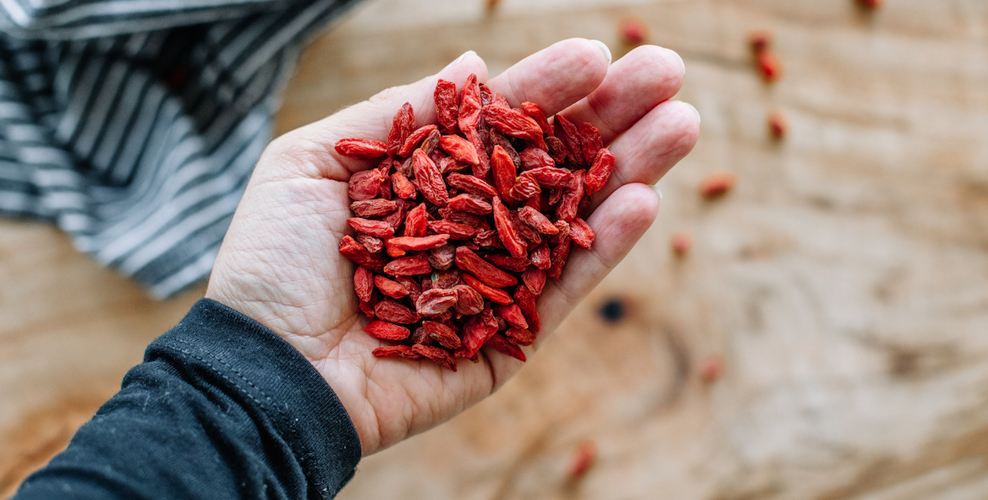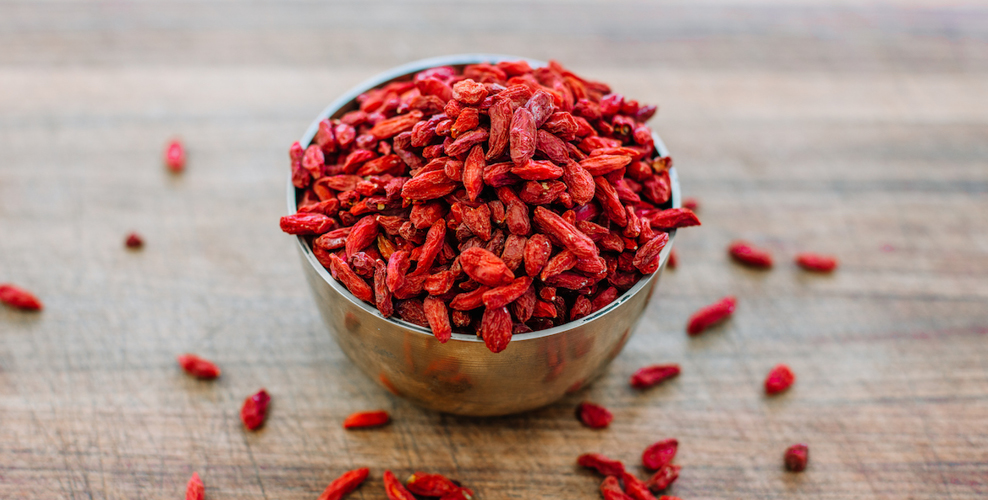Go-go-goji berry! Everything you need to know about this deliciously sour superfood
Read on to learn more about these beautiful, tasty medicinal morsels and how to add some of their goodness into your life.
What are goji berries?
Goji berries are grown commonly in the northwest regions of China, Tibet and some other parts of Asia.
Also known as Gou Qi or wolfberry, goji berries grow on two related plants whose botanical names are Lycium chinense and Lycium barbarum. They belong to the Solanaceae or nightshade family of plants, which also includes tomatoes, eggplants, chilli, capsicum and potatoes.1
Why are goji berries a ‘superfood’?
A superfood is any nutrient dense food that provides health benefits. Goji berries are famous for being a great source of antioxidants – helping to reduce free radicals that can cause damage to the body’s cells. Without good levels of antioxidants in the diet, the body can succumb to the damage caused by free radicals.
Goji berries are made up of carbohydrates, protein, fat and fibre and include the following nutrients:
- Vitamin C
- Riboflavin (vitamin B2)
- Zinc
- Iron
- Potassium
- Calcium
- Antioxidants betacarotene and zeaxanthin3
How to include goji berries in your diet
The naturally sour flavour of goji berries makes them a popular addition to sweeter snacks such as trail mixes, muesli and chocolates. They’re also great in smoothies, fresh juices, salads, sprinkled over porridge, or as a healthy snack all on their own.
Adding goji berries to homemade treats such as goji berry muffins and protein balls has become a popular way to incorporate them into the diet.
If you’re looking for something more savoury, try this goji berry fried rice recipe or add them into a congee.

The use of goji berries in traditional Chinese medicine (TCM)
While goji berries have only recently been introduced as a popular snack in Western culture, Asian cultures have been growing and consuming these little red berries for thousands of years.
Kidney health
The role of the kidneys in TCM cannot be understated. Kidneys are not only considered vital to the balance of fluids and removal of waste from the body, they’re also vital to the function of all the organs of the body.
Goji berries are traditionally used in Chinese medicine to strengthen the kidneys, balance yin and yang, invigorate jing, plus relieve fatigue when kidney yang is deficient.
In Chinese medicine, a healthy kidney organ-meridian system is traditionally believed to keep the opposing forces of yin and yang in balance. Goji berries are traditionally taken to nourish both yin and yang, balancing these two opposing forces to help keep them in a state of harmony in the body. Other traditional uses of goji berries in Chinese medicine are to strengthen jing (a form of life-force energy that’s traditionally believed to be stored in the kidneys and to decline with age).
Find goji berries in Fusion Health Kidney Tonic, along with the traditional Chinese kidney tonic herbs rehmannia and horny goat weed.

Liver support
In Chinese medicine, the liver is responsible for the smooth flow of blood and Qi (life force energy) throughout the body. From time to time, the liver can become imbalanced and lacking in nourishment.
Goji berries are one of the key ingredients in Fusion Liver Tonic, due to their traditional use in Chinese medicine for nourishing the liver and enhancing blood health. In this formula they’re accompanied by schisandra to support liver health and citrus peel to maintain the liver’s natural detoxification processes, both based on their traditional use in Chinese medicine. Fusion Liver Tonic also contains milk thistle, which is traditionally used to improve liver health in Western herbal medicine.
References:
- Ma Z F, et al. Oxidative Medicine and Cellular Longevity, 2019.
- Tan BL, et al. Front Pharmacol 2018;9:1162.
- Roy CC, et al. Nutr Clin Pract 2016;4:351-366.
- The FODMAP Challenge. Accessed 20th Jan 2021 from https://fodmapchallenge.com/low-fodmap-berries/

















